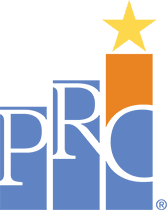When It Comes to Satisfaction, Patience Is Key to Patient Safety
Latest PRC Research Patient Safety Experts Demonstrates Importance of Unity in Patient Safety Initiatives
OMAHA, NEB. (PRWEB) FEBRUARY 20, 2020
For Immediate Release
Jana Distefano, MPH
Director, Marketing & Communications
Professional Research Consultants, Inc.
877-247-9477 / [email protected]
For successful hospitals, patient safety is the top priority. New research from PRC, an Omaha-based healthcare market research and consulting company, reveals the difficulties leaders face when implementing patient safety initiatives. Even just building a base of encouragement for employees to participate in patient safety initiatives can be tough and while patient safety thrives in unity, hospitals are split on how to incorporate patient safety during onboarding. Despite this, however, it’s imperative that organizations prioritize patient safety, not only for the sake of their patients, but also for their employees.
“PRC’s employee engagement research has shown, time and time again, that patient safety drives nursing satisfaction,” Dr. Cynthia King, PRC’s Director of Client Organizational Development, said. “Understanding the industry’s roadblocks to excellent patient safety measures only strengthens an organization’s ability to offer the gold standard of care.”
To uncover these roadblocks, PRC conducted a focus group during the fall of 2019 with professionals from hospitals and health systems across the country about patient safety in their organizations. Conversations drew inspiration from criteria in the Agency for Healthcare Research and Quality (AHRQ) Surveys on Patient Safety Culture (SOPS™), including initiatives, training, mistakes, and leadership. Using these topics, the discussions painted distinct pictures of hospital safety cultures, causing prevalent themes to emerge.
Leaders feel challenged to encourage employees to participate in patient safety initiatives
Healthcare leaders face difficultly in providing an environment where employees feel safe in reporting errors. While reporting protocols exist to ensure quality care for patients, staff must also feel comfortable regularly reporting incidents, especially given that they may be at fault. Concern for retaliation may also arise from reporting when only focusing on an individual event. However, by making reporting routine with daily opportunities like safety huddles and regularly asking for suggestions on patient safety events, hospitals can lessen the perceived severity of reporting incidents, cultivating a team who actively looks for opportunities to report and improve.
Part of developing an effective reporting routine involves encouraging staff members to reflect on why an incident happened and how they can keep it from happening again. Still, it’s important to remember that improving the reporting process cannot be fully realized with a one-time resolution or initiative. Rather, this is an ongoing development that requires continued attention and determination from organization leaders.
Hospitals are split on how to incorporate patient safety during onboarding
For better or worse, research shows that procedures for introducing patient safety during onboarding differ across hospitals and health systems. Some may bring in a senior-level member like a Chief Medical Officer, Director of Client Operations, or Quality Director to speak to new employees and leaders; others incorporate mandatory patient safety training courses during orientation. One expert went as far as describing simulation lab training for hospital residents and fellows to provide lifelike practice in identifying patient safety errors.
On the other hand, some hospitals find keeping patient safety separate from the rest of onboarding makes the safety culture orientation more meaningful. During onboarding, employees are presented with a broad array of topics (health benefits, retirement, etc.), many of which are unrelated to their day-to-day work. This process may become overwhelming to some employees, affecting the new employee’s retention of patient safety. Nonetheless, the deliberation surrounding how to introduce patient safety to new employees exemplifies the importance of ensuring everyone is on the same page.
Patient safety thrives in unity
To truly advance a patient safety culture, there needs to be collaboration and communication across an entire hospital. Many patient safety initiatives boil down to building these bridges, ensuring the whole organization speaks with a cohesive voice and moves as one when furthering their safety culture.
Establishing interdepartmental coordination often starts with staff recognizing the importance of communication, either by witnessing the effects of successful collaboration or exposing the potential for patient harm in the absence of effective communication. Once that’s acknowledged, opportunities for cultivating unified patient safety abound. For example, during safety huddles, staff members can touch upon how events covered in one floor’s meeting may affect other areas of the hospital. Further, hospital-wide safety meetings can set the stage for educating staff and leadership from multiple departments about how patient safety affects their work.
Put simply, one expert described her hospital’s communication practices as being “embedded within the fabric of the organization,” showcasing the potential for unity in a patient safety culture. As organizations seek a unified method for emphasizing patient safety, however, it’s important to remember that patience and persistence hold the keys to success.
“Establishing a culture of patient safety does not happen overnight,” Dr. King said. “Some initiatives take years to fully execute, and, much like improving the reporting process, optimizing patient safety is an ongoing process.”
Download the full report at prccustomresearch.com/patient-safety-report and learn more about PRC’s AHRQ solutions by emailing [email protected].
Professional Research Consultants, Inc., (PRC)
Since its inception in 1980, PRC has helped more than 2,200 healthcare organizations achieve their research objectives by collecting and analyzing timely, accurate, and reliable feedback from patients, employees, physicians, and the community at large. We are proud to be at the forefront of innovation in the healthcare market research industry. PRC helps healthcare organizations achieve excellence by collecting and analyzing timely, accurate, and reliable feedback through five research divisions: Patient Experience, Employee Engagement, Physician Partnership Solutions, Consumer and Brand, and Community Health Needs Assessments. Further, PRC’s Excellence Accelerator team provides world class consulting, coaching, assessments, and speaking services.
